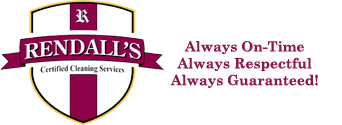What is the Best Carpet Cleaning Method?
Is there a Best Carpet Cleaning Method?
With so many different ways to clean carpets, what is the best way? The answer: It depends. I know, I know, not the answer you want to hear. But we’ll go over all of the methods and let you decide.
There’s five methods of cleaning, some of them overlap, but we’ll go through the five and tell you what we use at the end.
The first four we are going to cover are considered “maintenance” type of cleaning. According to industry consensus, the first four methods only clean the top third of the fiber.
Granted, the top third of the fiber (unless you have urine, spills and the like) may just be all you need to have cleaned if you do your carpet cleaning often, such as every two or three months. Then perhaps it is only on the top surface that you’re really worried about.
But, in our experience, most people wait a year or two to get cleanings, some more frequently because dogs, cats, and kids. And that’s not just considered by us, but the IICRC (Institute of Inspection Cleaning Restoration and Certification).
They are the ones who have tested all the methods with fancy labs and such. This is not only us saying it, but a third party that tells the industry what they believe is the right way, and in turn tell the carpet mills what they believe is the best method.
Dry Compound
First, is a “dry compound”. You might have seen the dry compund brands Capture or Host in the stores. It comes in a a box with a foil bag full of powder inside. There’s a rumor that it’s made of corn cobs (Host especially), ground up and impregnated with some kind of detergent. They sprinkle it over the carpeting and on high-traffic areas. There’s also a spray you put on top of that. Let it dry within 5-10 minutes and then vacuum it up. Well, you can make your own call whether that system is aggressive enough to deploy the contaminants that are in your carpeting.
Encapsulation/Dry Foam Absorption
Second is encapsulation. And I’m going to put encapsulation in together with another method called “dryfoam absorpotion”. There’s slight nuances of difference, but the theory is the same. You put in a product, you scrub it in with a machine, you let it dry and then you vacuum. So you could call that a“foam cleaning” or an “encapsulation cleaning” but it’s really a matter of what’s in the product. Encapsulation means that the soil is being covered by a liquid polymer. When it’s dried and vacuumed, the liquid polymer is attached to the soil and is pulling that out as you vacuum. We use this in a lot of maintenance accounts. We’re not so thrilled with it in residential carpet accounts, but it’s a good type of maintenance style cleaning.
Bonnet
The third method is bonnet. This is where a machine is brought in with a scrubber. There’s a pad that goes underneath the scrubber, and it’s usually made of cotton, synthetic materials, or a blend. Some of these pads have a red strip or a green strip in it. The theory goes that the product is put into a tank on the machine, and it’s scrubbed into the carpeting. With this motion, the soil transfers to the pad. The soil sticks to the pad and the pad is rotated out. It’s supposed to be rotated out often, but sometimes cleaners don’t really pull those pads off often enough. That will definitely lead to a carpet that’s not completely clean with the bonnet system.
Shampoo
The fourth method is shampoo. Shampoo is a system that isn’t used much anymore, unless it’s in conjunction with something like hot water extraction. The same type of system that we’d use on the bonnet is used, except for they generally use brushes on the bottom of a shampoo system. The machine is filled with a product of cleaner and water, and scrubbed over with brushes. It brushes the carpet, the soil gets agitated, and the thought is it gets loosened up. When it’s dry, it’s vacuumed. So it’s kind of across or hybrid between encapsulation and a bonnet system. But this is the system they used in the 60’s and 70’s. The true shampoo method, there’s nothing else to do with it. You scrub it in and you leave it in. The problem is a huge residue forms, so it’s like taking a shower and not rinsing off the soap you used.
Hot Water Extraction/Steam Cleaning
The one method of restorative cleaning is called “hot water extraction”, sometimes referred to as “steam cleaning”. When we hear “steam cleaning”, we’re assuming the customer is talking about hot water extraction. But there is technically a steaming system for light furniture, some types of really, really thin rugs, corner cleaning from buildings that have smoke damage, and even cleaning machine equipment.
But that method is not meant for carpet cleaning. The carpet cleaning method is technically called “Hot Water Extraction”. Hot water extraction can either be truck mounted or a portable machine. A truck is what we use, but we also have portables just in case. In residential carpet cleaning, we are going to use a hot water extraction of the truckmount. There’s water in the truck, a pre-cleaning agent that’s applied, agitated in with a groomer, and then rinsed out. Sometimes certain truck mounts or carpet cleaners will mix the product in the solution tank, but we prefer to spray down our product separately and extract out with pure, softened hot water. We use a cleaning wand that sprays down high pressure water at an angle, and then vacuums or extracts the water back up, so we’re able to get way down deep into the carpeting.
Now, no matter who does your carpet cleaning, the last thing you want todo is have them go through the backing of the carpeting with their cleaning method. That’ll soak the carpet, make it hard to dry, be wet for days, and you don’t want that. What we do to differentiate ourselves is to do extra drying strokes when we’re done with our hot water extraction. Then we will also use air movers and speed dryers to make your carpet dry to the touch when we leave. Generally, the first part we start at might be completely dry. The last part that we end with in your home might be slightly damp or cool to the touch, but it generally dries within just a few hours.
So going back over, we have four maintenance cleaning methods and one restorative method. For residential we’re mostly using the restorative method, so hot water extraction is our preference. The main concern with hot water extraction is the dry times, but that is why we do the extra drying strokes and bring in our fans to help speed it up. We have seen bad quality jobs from other cleaners using the hot water extraction method. So even though they are using what we think is “the best method”, it doesn’t always mean that person/company is going to do a good job. Same can be said about the other methods. At the end of the day, it really all comes down who is cleaning your carpet.

- Should I get my new carpets professionally cleaned after construction? - January 8, 2019
- What is the Best Carpet Cleaning Method? - December 12, 2018
- How Often Should I Get My Carpets Cleaned? - October 30, 2018
Tags: carpet, carpet cleaning, cleaning, stain fu
4 thoughts on “What is the Best Carpet Cleaning Method?”
Leave a Reply










this is great
Thanks for helping me understand that carpet steam cleaning would be using a certain machine that would do the hot water extraction. I just needed to know because we might need such services this coming May. It’s because we have realized that we already have lots of stains on the first floor area of the house.
really great information I get this from the article well I think we should use natural products for carpet cleaning what do you think about it?
It’s helpful to learn about different types of carpet cleaning techniques that help maintain your carpets. Last week, my sister moved to another house, and it came with carpeted flooring. I’m positive that your insight will help my sister keep the carpets in good shape by hiring a professional cleaning service that uses restorative cleaning techniques.